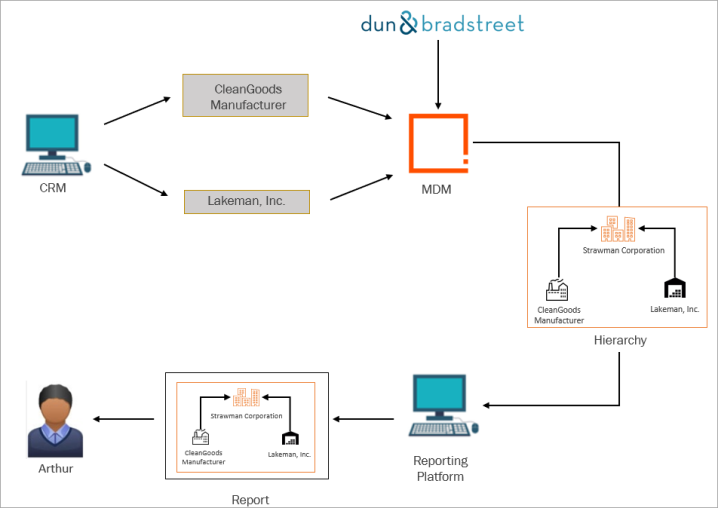Who is Impacted?
Arthur, a specialist on the procurement team, is responsible for managing suppliers from whom ACME obtains raw materials and finished goods. Among their responsibilities, Arthur strives to streamline ACME’s procurement process. To do so, Arthur relies on the reporting and analytics platform to conduct their analysis of supplier sales and performance.
What is the Business Problem?
In working with a multitude of suppliers to procure the necessary products or services for the business, it if often unknown whether there are existing relationships that could be leveraged to optimize ACME procurement processes and costs. Furthermore, being able to understand these supplier relationships also drives downstream reporting / analytical activities. Currently, ACME’s ERP application does not maintain such supplier hierarchical relationships as they do not factor in any transactional processes. This greatly limits the value of the reporting and analytics platform without sufficient data.
Without the benefit of third-party industry data, ACME’s initiative to better understand their suppliers is greatly limited to their day-to-day interactions with supplier representatives.
Current Process

For example, two of ACME’s current suppliers are subsidiaries of the same parent company. However, this is not realized by the procurement team and without the third-party industry profile data, the chances of ACME realizing this relationship is minimal.
As customer data is synchronized from the ERP application to the reporting platform, information provided by the procurement team is all that Arthur can rely on to extract their sales analysis. Without third-party industry data available to enrich their supplier data, potential cost savings are not realized.
Future Process

By leveraging third-party Dun & Bradstreet data, ACME may utilize DUNS numbers to build out supplier hierarchies which map newly discovered relationships between existing and prospective suppliers.
In the example above, CleanGoods Manufacturer and Lakeman, Inc. are existing ACME suppliers. However, the sales team was not aware both suppliers belong to the same parent company, Strawman Corporation. Armed with this information, the procurement team can negotiate reduced bulk costs for raw materials and goods that ACME require. Furthermore, ACME can aggregate CleanGoods, Lakeman, and Strawman into a single account grouping and better manage future agreements.